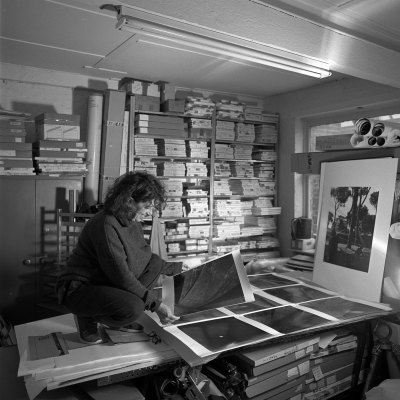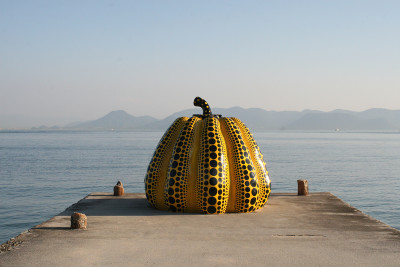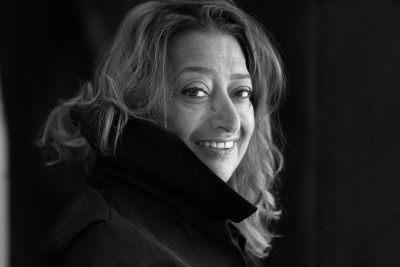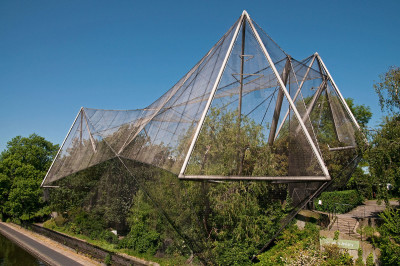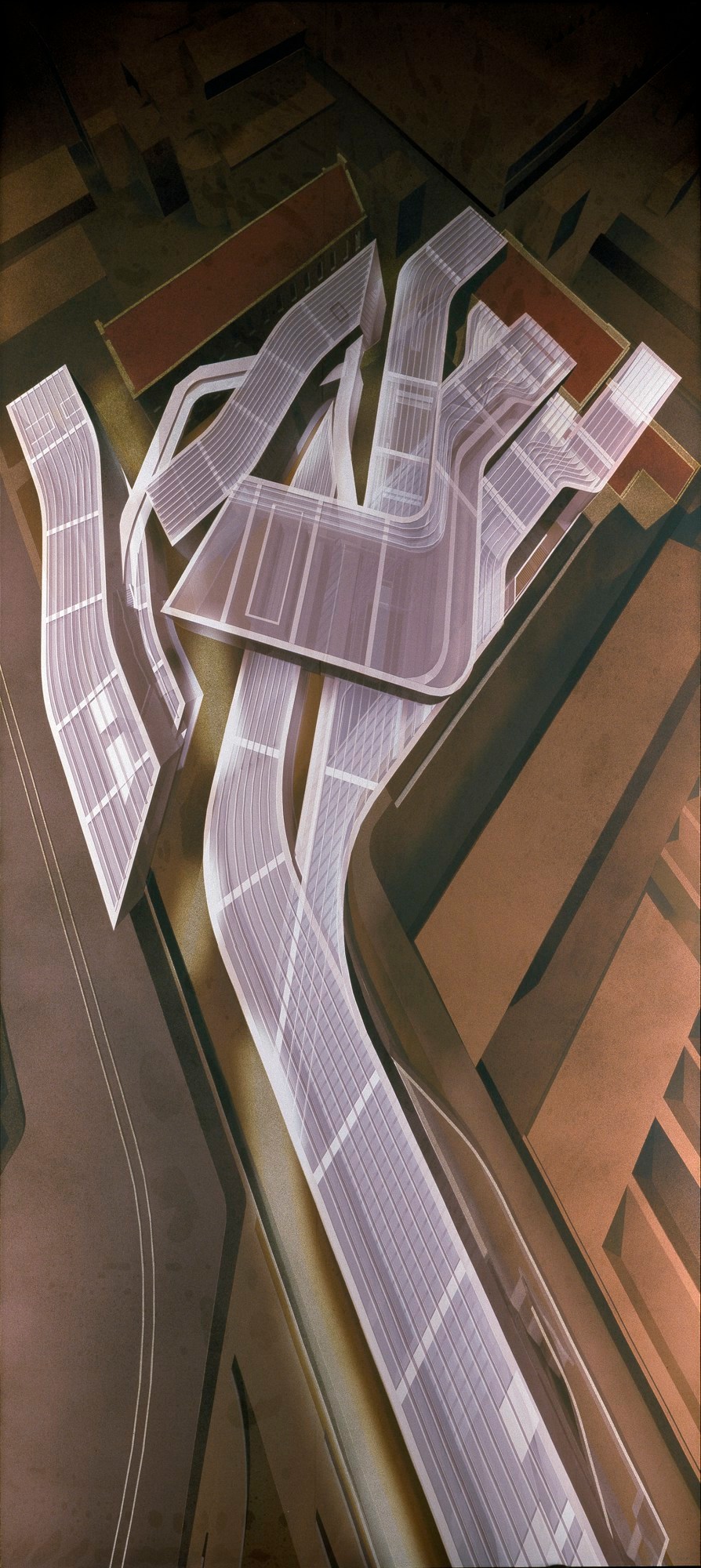
Dame Zaha Hadid RA, MAXXI: National Museum of XXI Century Arts, Rome, Italy, 2010: aerial view, 2010.
Acrylic on gelatine and chrome polyester, mounted on di-bond. 2000 mm x 900 mm x 5 mm. © Zaha Hadid RA. © Photo: Royal Academy of Arts, London. Photographer: Prudence Cuming Associates Limited.
This image is not available to download. To licence this image for commercial purposes, contact our Picture Library at picturelibrary@royalacademy.org.uk
MAXXI: National Museum of XXI Century Arts, Rome, Italy, 2010: aerial view, 2010
Dame Zaha Hadid RA (1950 - 2016)
RA Collection: Art
Zaha Hadid's MAXXI: National Museum of XXI Century Arts in Rome opened in 2010 after an extended gestation period. Developed in conjunction with her long-time co-designer Patrik Schumacher, Hadid’s building won the competition for this commission in 1999 out of 273 entrants; but funding was slow in coming. This striking ‘silver painting’ shows the scheme as it was projected in 2003, close to its eventual realisation. The view is from above, the building integrated into its urban setting, the old army barracks with their red roofs retained for museum use and wrapped into the sinuous form of the new structure. Hadid spoke of visitors' circulation through building as having ‘directional drifts’, with the intertwining spaces leading the visitor ‘experimentally’ through the tubes of galleries. Metal-finned louvers controlling light and for hanging pictures can clearly be seen in the painting, running like tracks in the glazed surfaces of the roof.
This painting, resembling a mirror of polished metal, was one of the first of a silver series that Hadid directed. The work is painted on a polyester skin treated with a chrome-like paint overlaid with transparent gelatine that enables the surface to absorb water-based colours. The image is first laid down very lightly through a sequence of digitally generated images. Then, with masking tape to control the edges, the paint is applied, mainly automobile acrylic, but also coloured inks, approximately 80% of it with a spray gun and 20% with an airbrush. Finally, the surface is varnished with a UV-coat. The result is a silver painting of three-dimensional intensity, with the reflective MAXXI building snaking in lines of movement against the opaque city background.
Zaha Hadid’s silver paintings are rooted in her early research of using drawing and painting to create radical architectural forms. Born in Baghdad, Hadid moved to London in the 1970s and studied at the Architectural Association. Her thesis project from 1976–77, entitled 'Malevich’s Tektonik', was a hotel on London’s Hungerford Bridge in which she derived her use of multiple perspective and fluid abstract space from the Russian Suprematists, such as Kasimir Malevich (1879–1935), and Constructivist artists (thus earning Hadid’s style the term ‘deconstructivist’). In 2004, when accepting the Pritzker Architecture Prize, Hadid spoke of the association between her paintings and architectural space: ‘One concrete result of my fascination with Malevich in particular was that I took up painting as a design tool. This medium became my first domain of spatial invention. I felt limited by the poverty of the traditional system of drawing in architecture and was searching for new means of representation. The obsessive use of isometric and perspective projection led to the idea that space itself might be warped and distorted to gain in dynamism and complexity without losing its coherence and continuity. Despite its abstractness – this work was always aimed at architectural reality and real life.’
Adapted from Neil Bingham, Masterworks: Architecture at the Royal Academy of Arts, London, 2010
Further reading:
Joseph Giovannini, 'In the Nature of Design Materials: The Instruments of Zaha Hadid's Vision', in Zaha Hadid, exhibition catalogue, Solomon R. Guggenheim Museum, New York, 2006
MAXXI museum website: www.fondazionemaxxi.it
Zaha Hadid's Pritzker Architecture Prize acceptance speech: www.pritzkerprize. com/ laureates/2004/ ceremony_speech1. html
Object details
2000 mm x 900 mm x 5 mm
Start exploring the RA Collection
- Explore art works, paint-smeared palettes, scribbled letters and more...
- Artists and architects have run the RA for 250 years.
Our Collection is a record of them.
